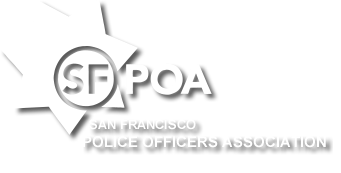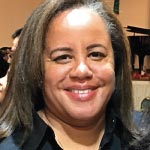THE SUSTAINABLE CITY EMPLOYEE BENEFITS REFORM ACT
Q. Mike, did the Adachi Petition gather enough signatures to be placed on the November 2010 ballot?
A. It Did. This proposal comes directly from Public Defender Jeff Adachi. He apparently intends to use it in his bid to become the next Mayor. More than 46,000 valid signatures (the requisite amount) were verified by the Department of Elections. (Adachi turned about 75,000 signatures.) This initiative petition will be on the November 2010 ballot. This initiative was financed by Michael Moritz, CEO of the venture capital firm Sequoia Capital who contributed about $230,000 to pay the professional signature gatherers. City employees recently held a rally in front of Michael Moritz' Vallejo Street, Pacific Heights mansion telling him that "it is not OK to take health care away from our families." If enacted, effective January 1, 2011, the contribution rates for active police officers and firefighters will increase from the current 7.5% to 10% and the contribution rates for all other city employees will also rise from 7.5% to 9%. The City would not, for labor contracts entered into after the November 2010 election, pay or otherwise "pick-up" any portion of the employee contribution to the Retirement System - another provision of this initiative.
City employee medical care contributions costs will also go up under this proposal. For active employees, the "ten county survey" will govern the City's contribution ($473 for FY 2010-2011); no longer will MOU's (employment contracts) be allowed to require the City to pay or "pick up" contributions in excess of that shown in the annual survey. Dependent coverage will be restricted to no more than 50% of the cost at each level of dependent coverage. In any MOU entered into after November 2010, the City's may contribute no more than 75% of the cost of employee dental coverage and 50% of dependent dental coverage. If enacted, this Charter amendment will drive up active employee health care costs for employee +1 and employee +2 from 15% to 2,669%.
These increased cost provisions pertain to current city employees as well as those hired on and after the passage (November 2, 2010) of this proposed Charter amendment. However, this increase in employee contribution to the retirement system or for medical care shall only become effective at the expiration of current MOU's (for police officers this is July 1, 2013).
But, if passed, would this Charter amendment withstand any and all judicial challenges? That is, how can these proposal effect current city employees who have vested retirement benefits and MOU protected health service benefits? There will be a legal challenge to this initiative before November and will certainly be litigation after November if it passes. Active police officers did participate in "cost sharing" of the added costs of Proposition H (3% at 55) in the MOU of 2003 and 2007 with various "give backs," deferrals, and waivers.
City employee organizations are organizing a massive opposition to the proposal. No city, state, of national politician supports it. Even the San Francisco Democratic Central Committee is opposed.
Retiree costs for health care will be indirectly and negatively impacted. Should this legislation drive active employees from the City Health Plan then it will become more expensive for those retired employees who chose (larger selection of treating doctors) or are compelled (live out of the SF Bay Area) to participate in this Plan.
WIDOW'S AND ORPHAN'S AID ASSOCIATION
Q. Mike, I recently retired. Am I required to continue to contribute to the Widow's and Orphan's Association?
A. Yes. The cost is a mere $72 per year payable every January. When you retire, I urge you to contact the Widow's and Orphan's Aid Association of S.F.P.D. (415-681-3660) so that you can retain your membership by making the annual contribution. While you were active, you paid $2.84 every pay period via payroll deduction. Now that you have retired, payroll deduction is no longer available.
The Widow's and Orphan's Aid Association was founded in 1878. It currently pays a death benefit of $17,000. John Centurioni is its President; Mark Hurley serves as its Secretary. Its Board of Trustees include: Harold Vance, Jr., Bob Mattox, Al Luenow, Mark McDonagh, and Bill Gay. The Association's trust fund of $7 million is advised by Wells Fargo Bank and managed by the Trustees.
Retain your membership. Make your annual contribution. This is very inexpensive term life insurance. And please make sure that your designated beneficiary is current.
CCSF DEFERRED COMPENSATION PLAN
Q. Mike, which portfolios (funds) performed best for the first seven months of 2010?
A. The San Francisco Deferred Compensation Plan has released its performance figures through July 2010. The top performers were the real estate portfolio (up 16.43%), the core bond portfolio (up 7.41%), the small cap value equity portfolio (up 5.06%), the small cap core equity portfolio (up 4.78%), and the small cap growth equity portfolio (up 4.50%). Small cap equities generally lead when the stock market recovers from a period of decline. When the market turned around in March 2009, small cap has led the way. But don't chase performance. Leadership changes quickly. Stay diversified. By way of comparison, the stable value portfolio was up 1.97%; the worst performer for this period was the large cap growth equity portfolio at a -1.96%.
As of July 31, 2010, the Plan's balance was $1,803,303, 945 with 23,982 participants.
Note: members currently in DROP (deferred retirement option program) can roll DROP funds into the CCSF deferred compensation plan when they exit DROP. But to do so, you must be a participant in the deferred compensation plan. This roll over can be partial or complete; that is, you can roll over all or a part of your DROP account monies. Within 30 days after exiting DROP, you must elect either a direct lump-sum distribution or a direct rollover of your account. Selecting the lump-sum distribution payable directly to you invites and compels an immediate huge tax bill from the Internal Revenue Service and the State Franchise Tax Board.
CCSF HEALTH SERVICE SYSTEM
Q. Mike, what are the demographics of the City health plans?
A The Health Service System administers health plans for the employees and retirees of four major San Francisco public-sector employers - the City and County of San Francisco, the San Francisco Unified School District, the San Francisco Community College District, and the San Francisco Superior Court. Total plan members (including retirees) and their dependents now number 105,545 (called total lives). As of July 1, 2010, Blue Shield has 45,388 lives; Kaiser has 49,971 lives, and the City Plan with 10,186 lives.
For retirees and their dependents, Blue Shield has 8,992 lives, Kaiser with 14,042 lives, and City Plan 8,305 for a total of 31,339 covered lives.
The City Plan, required by Charter, has continually lost active employee membership since it is the costliest of plans. But, it has continued to gain retiree membership since it is the only plan available outside of the SF Bay Area (it affords world-wide coverage). Since people over age 50 are, by national statistics, four times more costly to health plans than those under age 30, this continued loss of younger lives in the City Health Plan will continue to drive up the costs of the City Plan.
Mike Hebel has been the POA's Welfare Officer since January 1974. He is an attorney and a certified financial planner. He has received awards/recognition as a Northern California "super lawyer" and included amongst "America's top financial planners." He represents POA members at the City's Retirement Board and at the Workers' Compensation Appeals Board. He also advises on investment matters pertaining to the City's deferred compensation plan. He is currently the chair-person on the SF Police Credit Union's Supervisory Committee. Mike served with the PAL as president and long-term Board member. Mike retired from the SFPD in 1994 after a distinguished 28 year career. He is a frequent and long-time contributor to the POA Journal. If you have a question for Mike, send an e-mail to mike@sfpoa.org or call him at 861-0211.

